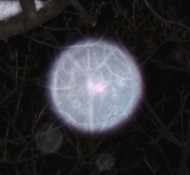In a previous post, we explored the structure of the omniverse, our multiverse and physical universe, and the entities that created them, i.e. the Origin and the 12 Source Entities. Their goal was to learn how to create and experience anything and everything and to evolve from those experiences in order to accelerate the Origin’s evolution. All Source Entities have the same set of energies and building blocks to work with.
Through Guy Needler’s work, we discovered that each of the Source Entities became self-aware (sentient) independently and had free will to create their own version of a universe or multiverse and the “formless” and “formed” entities to populate them.
Artistic rendition of a multiverse by Sam Del Russi (Source)
How did our Source Entity structure our multiverse?
Our multiverse was created by Source Entity One (SE1), who decided to duplicate the way the Origin had split itself into 12 parts, reproducing everything down to the last frequency.
- That’s why our multiverse has 12 full dimensions, which are nested. We have dimensions within dimensions.
- Our Source split up half of its mass to create countless smaller parts of itself. But a problem arose, because our Source took its eye off the ball! Oops!
It used a process to create the entities more efficiently, but it didn’t focus on the final diversification process. For that reason, not all entities were created with the same volume or quality of sentient energies. This created different entity types in our multiverse.
What type of entities exist in our multiverse?
As the Chinese saying goes: “In every crisis lies the seed of opportunity.” That applies to our Source Entity. Since the other Source Entities chose not to explore lower frequencies (too hard!), our Source Entity provided a unique opportunity for some entities to explore the lowest levels of our multiverse.
- About 65% of the entities (True Energetic Selves) were created properly as true replicates of SE1. They are able to do everything. They can move and evolve through all the frequencies in the entire multiverse.
- They can project parts of themselves into the physical universe to incarnate, so they can accelerate their own evolution. All these entities are tied to the Source Entity that created them and cannot jump ship.
- The other 35% of the entities can only exist and work in the lower dimensions and frequencies.
That explains why some entities are fully sentient (like humans and above), who are self-aware and able to change themselves and their environment.
- Some entities are semi-sentient (like animals and instinctive races of entities).
- Others are non-sentient (the automata/robotics) or purely instinctive and below (like the plant and mineral kingdoms on Earth).
Although all of these entity types are capable of growth, their rate of evolution depends on the level of sentience (see Where Do Human and Other Souls Come From? – Big Picture Questions.com).
Are there any other differences?
There are a couple of other fundamental differences among entities:
- Eternal vs. finite entities: Some entities (like us) have eternal existence, while other entities are finite or non-eternal and have to be re-created.
- Shapes of entities: In our multiverse, the predominant shape for energy that has purpose whether it’s sentient or not is the sphere (like the “orb” shown below).
In other multiverses created by other Source Entities, the shapes of entities differ widely (e.g. donut (torus), net-like, cloud-like, wraith-like or other shapes and forms).
Where are we headed eventually?
According to Needler, all experiences that contribute to evolutionary content are passed on from the smallest entities all the way to the Source Entities, who share it amongst themselves and the Origin. Eventually, all entities become equal to their creators (see How Does the Multiverse Cycle Through Expansions and Contractions? – Big Picture Questions.com).
“Ascension is a gradual process. It’s happening to everybody all of the time. It’s a natural function of the multiverse to ascend.” – Guy Needler (Beyond the Source Book 2)






